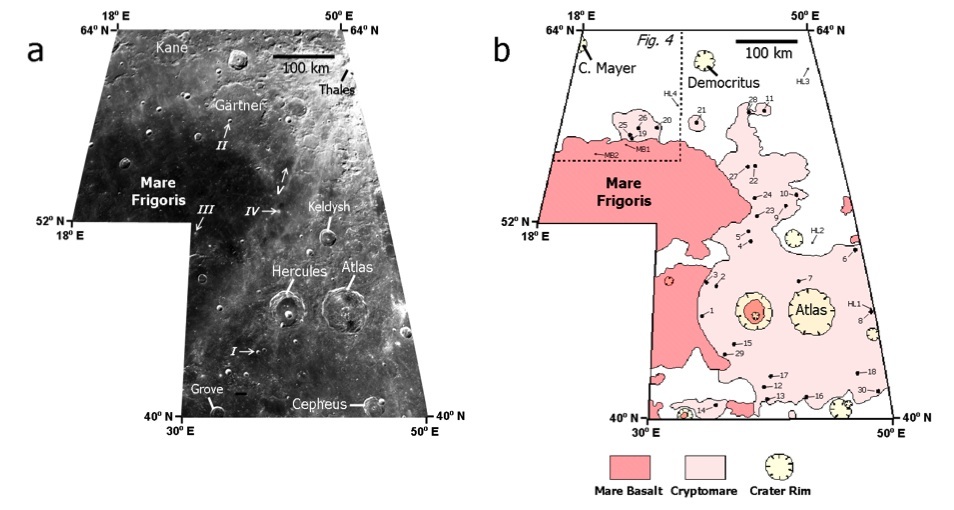March 28, 2009
More Cryptomare

PowerPoint slide from presentation at LPSC from Tom Giguere
Cryptomaria are mare basalt lavas that are covered by a layer of bright material. Significant amounts of cryptomaria are already known to occur around the Schickard area, and at the 2009 Lunar and Planetary Science Conference B. Ray Hawke, Tom Giguere and their colleagues have identified another large cryptomare area east of Mare Frigoris. Traditionally, buried maria are detected by recognition of dark halo craters, small impact craters that excavate through the bright covering and bring up dark maria ejecta. Copernicus H is a well known and easily visible example, with the bright ejecta from Copernicus hiding the mare lavas. Hawke's group found a new way to recognize buried mare. Instead of dark halo craters, they use iron-rich ejecta craters (IREC). Bright highlands material is iron-poor, but mare basalt is relatively iron-rich so that iron-rich ejecta is a sign of mare under a crater. Unfortunately, unlike DHC, IREC can not be recognized with your eyeball. But spectra (brightness at different wavelengths) created from Clementine images allows iron in ejecta to be recognized. The light pink in the map above shows the area of cryptomare (based on the distribution of IREC), showing that Mare Frigoris originally extended further east than we see it today. And the bright material that covers the mare? It's ejecta from Atlas, Hayn, Democritus and other recent craters.
Chuck Wood
Related Links
Rükl plates 6 & 15
Yesterday's LPOD: A New Standard
Tomorrow's LPOD: Cataloging Craters
COMMENTS?
Register, Log in, and join in the comments.



